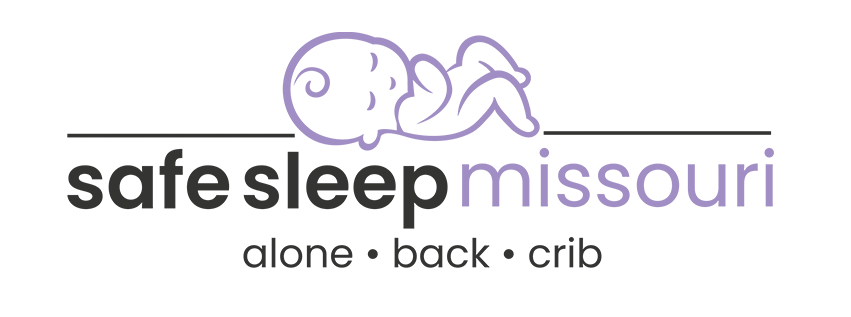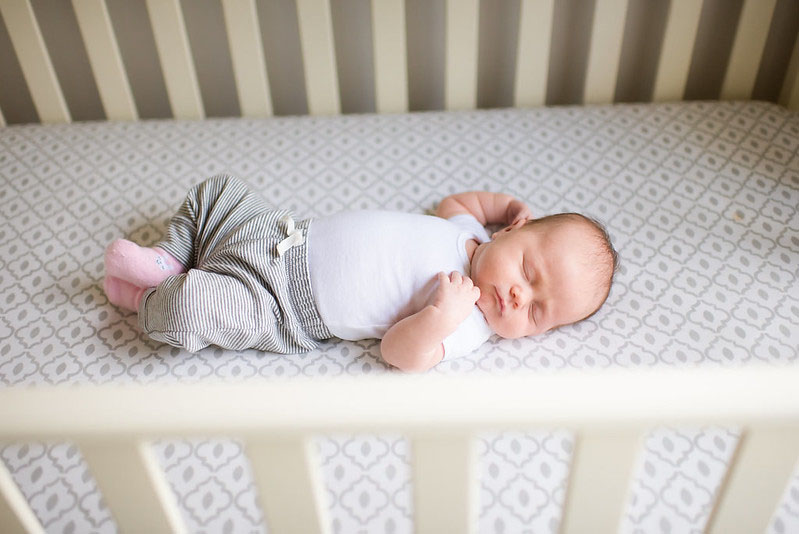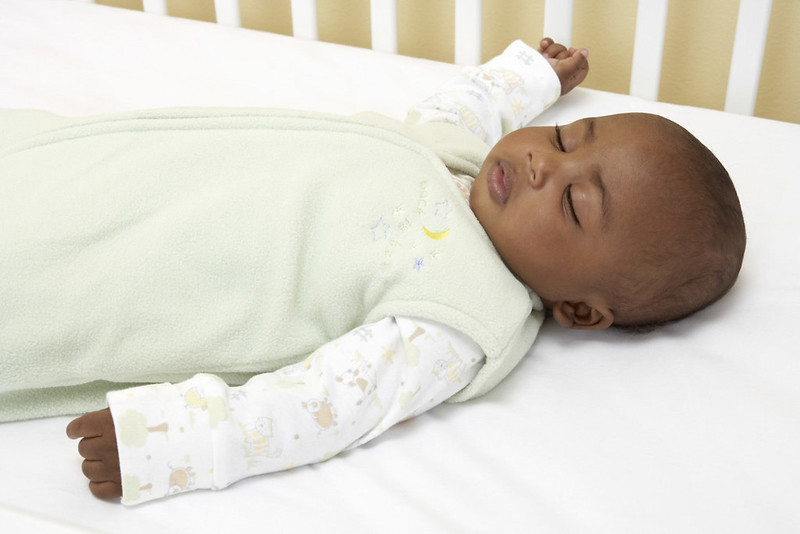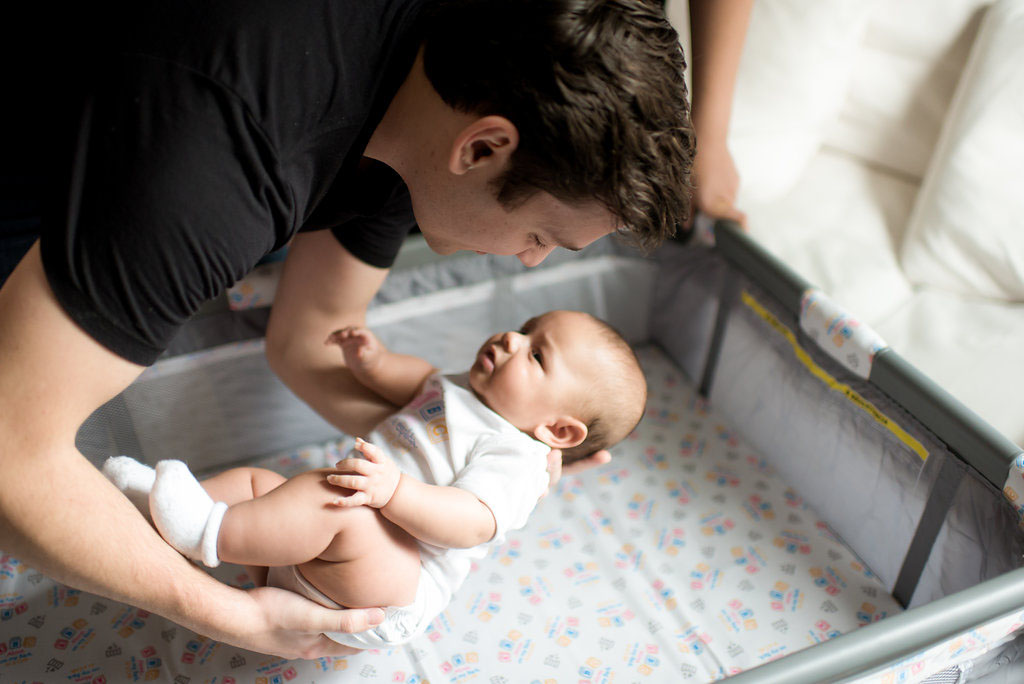Public Use Social Media Posts
-
Use following hashtags as appropriate:
#MOSafe2Sleep
#safesleep
#AloneBackCrib
-
Room sharing without bed-sharing still allows closeness with your infant. This helps facilitate feeding, comforting and monitoring of the infant all while they are in their Crib, on their Back, sleeping Alone.
-
Place baby ALONE to sleep in a crib or bassinette. Remove all soft objects, toys, blankets, bumper pads, pillows and pets from the sleep area. This will help prevent suffocation, entrapment and strangulation.
-
Up to age 1, always place your baby on his or her back to sleep alone for night time, nap time and every time. The back position does not increase the risk of choking.
-
Place baby ALONE to sleep in a crib or bassinette. Remove all soft objects, toys, blankets, bumper pads, pillows and pets from the sleep area. This will help prevent suffocation, entrapment and strangulation.
https://ctf4kids.org/public-awareness/awareness-campaigns/safe-crib-safe-sleep/
-
Your baby should sleep in the same room where you sleep, but alone in a crib or bassinet. Bed sharing is dangerous. Room sharing without bed sharing allows closeness with your infant and helps with feeding, comforting and monitoring your baby.
https://ctf4kids.org/public-awareness/awareness-campaigns/safe-crib-safe-sleep/
-
#DYK The Safe Cribs for Missouri program provides portable cribs and safe sleep education to low-income families who have no other resources for obtaining a crib. Call 800-TEL-LINK (800-835-5465) to find a provider near you or visit https://health.mo.gov/living/families/babies/safecribs/index.php for more info.
-
MYTH: My baby will develop a flat head laying on their back. FACT: Placing a baby to sleep on their back, in a safety approved crib with a fitted sheet is recommended by the AAP. To reduce the chance of flat spots on your baby’s head provide “tummy time” when your baby is awake and someone is watching, change the direction that your baby lies in the crib from one week to the next and avoid too much time in car seats, carriers, and bouncers.
-
You can reduce your baby’s risk of suffocation by practicing #SafeSleep: place on back in own sleep area, on a firm surface, with no bumpers, pillows, stuffed animals or loose bedding.
-
Think about how much you move when you sleep at night… do you think that’s a safe place for your baby to sleep too? Save your baby’s life by creating a #SafeSleep environment.
-
Avoid smoke exposure, alcohol and illicit drug use during pregnancy and after childbirth. Not smoking around your infant is the healthiest for baby as well as yourself, and often leads to less colds and infections for baby.
-
Babies should NOT sleep in a car seat or bouncy seat. Since baby can’t lie flat, his head may tip forward. With no head control while placed in this position, baby may have difficulty breathing.
-
Babies are most safe when placed on their backs in a crib, without any items such as pillows, blankets or toys – practice #SafeSleep
-
Prevent #suffocation, practice #SafeSleep: baby on back in own sleep area, on firm surface, w/no bumpers, loose bedding.
-
Do NOT place baby to sleep on an adult bed or other soft mattress, waterbed, sofa, chair, beanbag, pillow, cushion, other soft surface or in a car seat.
-
You can reduce your baby’s risk of suffocation by practicing #SafeSleep: place on back in own sleep area, on a firm surface, with no bumpers, pillows, stuffed animals or loose bedding.
-
The safest place for baby to sleep is a safe crib/portable play area/bassinet—NOT a car seat, sling, swing, bouncer, stroller.
-
Always put baby to sleep Alone, on his/her Back, in a Crib. Putting baby down to sleep with adults or other children can cause baby to suffocate.
-
Dress baby in a sleeper/sleep sack instead of using a blanket or other covering. Do not let baby overheat.
-
Place your baby in a safety-approved crib, bassinet or portable play area with a firm sleep surface & fitted sheet.
-
Remove all soft objects, toys, blankets, bumper pads, pillows from the baby sleep area. Prevent suffocation & strangulation.
-
A reminder to all parents (and grandparents…child care providers…babysitters… and anyone who takes care of a baby) to practice the ABCs of Safe Sleep. Babies sleep safest Alone, on their Backs and in a Crib. Night time, nap time, every time.
-
Sleeping in the same room as your baby can reduce his or her risk of sleep related death. @AmerAcadPeds recommends that babies sleep in their parents’ room, but in their own crib, bassinet or pack n play, for at least the first 6 months of life.
-
Put baby to sleep alone in a crib or bassinet. Bed sharing is dangerous.
-
Share the room, not the bed. You and your baby will both sleep better…and safer.
-
If you bring baby into your bed to #breastfeed, put him or her back in a separate safe sleep area (a crib or bassinet) when finished.
-
If you’re feeling tired before or during #breastfeeding, ask someone to help you place baby back in his or her separate sleep area (a crib or bassinet) when feeding is over or if you fall asleep.
-
Feeling tired before or during #breastfeeding? Set a timer for every few minutes to help you stay awake and put baby back in a separate #safesleep area (a crib or bassinet) when done or if you fall asleep.
-
Learn about infant safe sleep and the American Academy of Pediatrics (AAP) recommendations for safe sleep practices to prevent infant suffocation and infant mortality. Babies should sleep Alone, on their Backs in a Crib for night time, nap time, every time. This video was developed in partnership with the Missouri Department of Health & Senior Services (DHSS), the Missouri Department of Social Services (DSS) and the Missouri Children’s Trust Fund.
https://www.youtube.com/watch?v=T8QNODDhve8
-
Share your room with baby. Keep baby close to your bed but on a separate surface, for example, in their own crib or bassinet. #safesleep #MOSafe2Sleep





